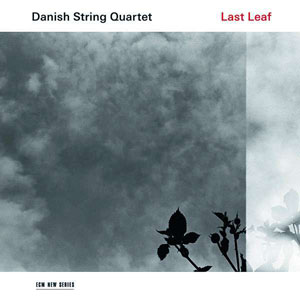 Last Leaf is the Danish String Quartet’s second foray into “traditional” music. Their previous album in this vein, Wood Works, focused on music of the Faroe Islands and various small Nordic towns and villages. Last Leaf, although still focusing on Nordic folk music, is somewhat more far-ranging, including tunes from Sweden, Denmark, the Shetland Islands, and a few written by members of the quartet.
Last Leaf is the Danish String Quartet’s second foray into “traditional” music. Their previous album in this vein, Wood Works, focused on music of the Faroe Islands and various small Nordic towns and villages. Last Leaf, although still focusing on Nordic folk music, is somewhat more far-ranging, including tunes from Sweden, Denmark, the Shetland Islands, and a few written by members of the quartet.
While it may surprise some readers here, I do have more than a passing acquaintance with traditional music, ranging from hard-core Appalachian fiddling to the Anglo-Nordic tradition to English, Irish and Scottish folk-rock and beyond. Sticking to the European traditions, since that is what this album is about, my first impression is that it’s a new take on traditional music — the whole feel is different than, say, a concert by the String Sisters or one of Capercaillie’s earlier albums.
Perhaps the best example of this is “Tjønneblomen“, a song which actually dates from the twentieth century, composed by Norwegian fiddler Gjermund Haugen. I was familiar with this one from performances by other, more “traditional” artists. Danish String Quartet’s rendering offers a kind of lightness to the tune that I don’t remember from the others. It also seems to have somewhat more depth, a more integrated feel than the same song performed by a solo fiddler or even a fiddler with back-up.
This is, in many respects, true of the whole album. While some of these songs are very old — “Drømte mig en drøm” (a particularly evocative and compelling song) was written down in the 13th century, which doesn’t tell us how old it really is — the notes to the disc call it “the oldest known secular song in the Nordic countries” — others were written by members of the quartet. I defy anyone, however, to tell which is which.
The album starts with “Despair not, o heart”, a Lutheran chorale first written down in the early 16th century, which the group refers to as “a funeral hymn”. The arrangement by the quartet adds a bit of sweetness to the piece without losing the essential elegiac quality. The album progresses through country folk songs, polskas, a reel composed by violinist Rune Tonsgaard Sørensen, a waltz by cellist Fredrik Schøyen Sjölin, and, after journeying through several modes and many moods, ends with “Now is found the fairest of roses,” a Christmas hymn first published in the early 18th century by Danish poet H. A. Brorson — using the same music as the funeral hymn that opens the collection.
I should add that the instrumentation is not limited to two violins, viola and cello, but also includes harmonium, double bass, glockenspiel, and piano, which adds to the richness of the sound.
When reviewing any collection of any music aside from hard-core classical or romantic orchestral works, one is almost compelled to point out highlights, a particular song that stands out. I found that impossible with Last Leaf — not through any lack in the music, but simply because, although running through many moods and forms, the collection is really seamless — it’s like a symphony or, closer to home, a string quartet, that shifts from mood to mood, subtle and almost deceptive, perhaps all the more engaging because of that.
Which is to say, it’s an album you can play while going about other things and have music that’s a little more than pleasant in the background, or you can sit and listen and be amply rewarded.
The Danish String Quartet is: Rune Tonsgaard Sørensen (violin, harmonium, piano, glockenspiel); Frederik Øland (violin); Asbjørn Nørgaard (viola); Fredrik Schøyen Sjölin (violoncello, double bass).
(ECM Records, 2018)
